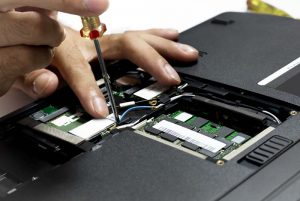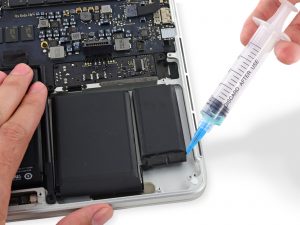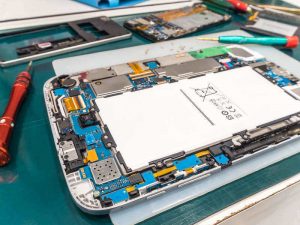
Kyle Wiens of iFixit speaks at E-Scrap 2017.
Repair is a growing portion of the e-scrap field, and experts predict it will continue to increase as companies learn the revenue that can be realized by reusing rather than shredding certain good-quality components.


 Last Tuesday and Wednesday, dozens of industry experts took to the stage in Orlando to discuss the trends and challenges shaping electronics recovery right now. Here are some of the most compelling pieces of information we took away from those talks.
Last Tuesday and Wednesday, dozens of industry experts took to the stage in Orlando to discuss the trends and challenges shaping electronics recovery right now. Here are some of the most compelling pieces of information we took away from those talks.
 Bolstering domestic markets is a logical way to reduce exports, and that concept is behind a just-announced program that’s tied to an e-scrap certification.
Bolstering domestic markets is a logical way to reduce exports, and that concept is behind a just-announced program that’s tied to an e-scrap certification. A company that manages mobile phone take-back programs has invested more than $1 million in a new processing site and plans to hire hundreds of workers in the coming months.
A company that manages mobile phone take-back programs has invested more than $1 million in a new processing site and plans to hire hundreds of workers in the coming months. The average resale price for desktop computers and laptops has grown over the past two and a half years, according to a report by a prominent ITAD company.
The average resale price for desktop computers and laptops has grown over the past two and a half years, according to a report by a prominent ITAD company. Global e-commerce site eBay is honoring a California woman who immigrated from Colombia with nothing more than a suitcase and later co-founded a successful e-scrap company.
Global e-commerce site eBay is honoring a California woman who immigrated from Colombia with nothing more than a suitcase and later co-founded a successful e-scrap company. A product offering from iFixit can help tackle one of the largest roadblocks to increased device repairability and refurbishment: glued-in batteries.
A product offering from iFixit can help tackle one of the largest roadblocks to increased device repairability and refurbishment: glued-in batteries. A branch of the European Union is calling on stakeholders to improve the repairability of electronics and ferret out devices designed to have short lifespans.
A branch of the European Union is calling on stakeholders to improve the repairability of electronics and ferret out devices designed to have short lifespans. On average, popular phones, tablets and laptops are relatively easy to fix, but the market may be trending toward less repairable designs, a recent analysis found.
On average, popular phones, tablets and laptops are relatively easy to fix, but the market may be trending toward less repairable designs, a recent analysis found.